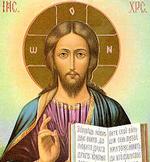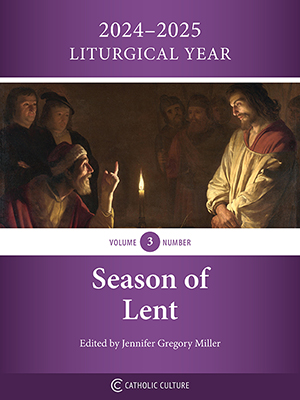Catholic Activity: St. Brigid of Ireland
The Memorial of St. Bridget or Brigid on February 1st is a National Feast Day in Ireland. This excerpt from Feast Day Cookbook gives a brief biography of St. Bridget, with some legends and includes some suggestions of recipes.
DIRECTIONS
February is the shortest of months, one with few feasts, and usually beginning the year''s greatest fast, Lent. The name''s origin is from Februarius, the Roman feast of purification, but it is still a fitting name for this most Christian season.
The first feast in February is that of Saint Bridget, known lovingly in her own land as "Mary of the Gael." According to the scholars the name is rightly Brigit, but the common spelling is Bridget, and hers is the name borne by more girls in Ireland than any save one, that of Mary. In many legends she is associated with Saint Patrick, who is said to have baptized her and who had her help in converting Ireland; when he died it was she who stitched his shroud. Born about 450, she founded the nunnery of Kildare, the first on Irish soil.
In Celtic lands the dandelion is called "Saint Brigit''s flame," so every time you see this flower think of that bright flame of faith, Saint Bridget, who carried on the work of Saint Patrick and whose watchword was "mercy." In the hearts of the Irish, Bridget stands for all that is sweetest and best and most human in women. An old story tells that she was born of a slave mother and taken from her at birth, but when she was older she set out to rejoin the lonely old woman and found her "at a mountain dairy having twelve cows with her, and she collecting butter." This legend doubtless explains why Bridget is considered the protectress of dairy workers and also this verse of "The Prayer of Saint Brigit":
O my Prince of Heaven! Bless a prayer unbidden — O pure Whiteness Bless a kitchen that hath butter!
It is told that "everything Bridget put her hand to increased and grew beautiful," and in old stories she is shown feeding her hungry hounds with the table meat and brewing ale for the churches. Baskets filled with apples and fragrant bread are "Brigit alms," and it is said she left to her countrywomen her gift of simple healing — for most Irish women have some elementary knowledge of medicine and herbal remedies.
Bridget is well known not only in Irish households but also in English, for she was a favorite saint in the Britain of an early day. In London an ancient well, named Saint Bride''s Well in her honor, lent its name to the nearby Brideswell Palace which Edward VI turned into a workhouse for the poor in later years.
On her feast special cakes were served with ale, called Barinbreac, and sometimes Barmbrack or Barnbreak.
Activity Source: Feast Day Cookbook by Katherine Burton and Helmut Ripperger, David McKay Company, Inc., New York, 1951






